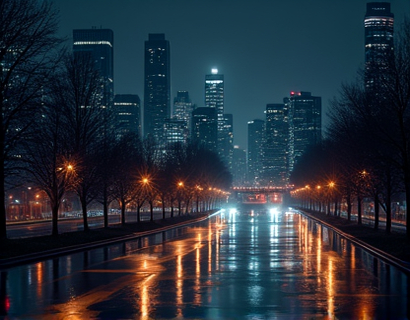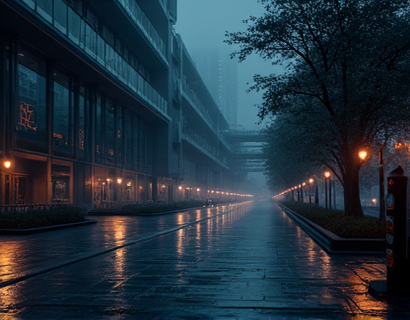Comprehensive Travel Guide to the Ancient Indus Valley
The Indus Valley, a cradle of one of the world's oldest civilizations, beckons tourists and cultural enthusiasts with its rich tapestry of history, architecture, and cultural heritage. Spanning across present-day Pakistan and northwestern India, this region offers a unique journey into the past, where ancient cities, intricate artifacts, and mysterious scripts await discovery. This guide aims to provide a deep dive into the cultural heritage, historical landmarks, and practical travel tips to ensure a memorable and enlightening visit to this timeless region.
Historical Background of the Indus Valley Civilization
The Indus Valley Civilization, also known as the Harappan Civilization, flourished around 2600 BCE to 1900 BCE. It is one of the three ancient civilizations of the Old World, alongside Egypt and Mesopotamia. The civilization was named after the city of Harappa, one of its major urban centers, discovered in the 1920s. At its peak, the Indus Valley Civilization covered a vast area, including parts of modern-day Pakistan, northwestern India, and eastern Afghanistan. The cities were known for their advanced urban planning, sophisticated water management systems, and intricate craftsmanship.
Major Historical Landmarks
Visitors to the Indus Valley can explore several significant historical sites that offer a glimpse into the lives of the ancient inhabitants. One of the most famous is Mohenjo-Daro, a UNESCO World Heritage Site located in the Sindh province of Pakistan. This city is renowned for its well-planned streets, advanced drainage systems, and the Great Bath, a public bathing facility that showcases the civilization's emphasis on cleanliness and hygiene. The citadel, with its massive public buildings, stands in contrast to the lower town, where residential areas and workshops were located.
Another must-visit site is Harappa, also in Pakistan, which provides a comprehensive view of the urban layout and daily life of the Indus people. The site includes the Granary, a large storage structure, and the Citadel, which features the Platform of the Pillars, a mysterious structure with no known equivalent in other ancient cities. The Ravi Phase at Harappa offers insights into the early stages of the civilization.
In India, the city of Dholavira in Gujarat is a significant archaeological site. Known for its well-preserved structures and intricate water management systems, Dholavira provides a unique perspective on the engineering skills of the Indus people. The site is divided into four main quarters, each with its own set of buildings and public structures, offering a comprehensive view of urban planning.
Cultural Heritage and Artifacts
The Indus Valley Civilization is celebrated for its distinctive art and craft. Terracotta figurines, seals, and jewelry made from copper, bronze, and precious stones are some of the most fascinating artifacts discovered. The famous "Dancing Girl" and "Priest-King" figurines, found at Mohenjo-Daro, showcase the artistic skills and the possible social hierarchy of the time. Seals, often used for trade, feature intricate carvings of animals and symbols, some of which remain undeciphered.
The Indus script, consisting of over 400 distinct signs, is one of the most intriguing aspects of the civilization. Despite extensive research, the script has not been fully deciphered, adding an element of mystery to the culture. However, the presence of standardized weights and measures suggests a sophisticated economic system, while the uniformity of city planning indicates a high level of social organization.
Daily Life and Social Structure
Life in the Indus Valley cities was remarkably organized. The urban centers were divided into grid-like patterns with wide streets and well-planned drainage systems. Houses were built with baked bricks and had facilities like bathrooms and latrines, indicating a high standard of living. The presence of public baths, like the Great Bath at Mohenjo-Daro, suggests that cleanliness and ritual purity were important aspects of daily life.
The social structure of the Indus Valley Civilization is not entirely clear, but evidence suggests a relatively egalitarian society. There is little evidence of grand palaces or temples, which is unusual for ancient civilizations, leading some scholars to propose a society based on craft guilds or a council of elders. Trade was a significant part of the economy, with evidence of long-distance trade networks extending to Mesopotamia and the Persian Gulf.
Practical Travel Tips for Visiting the Indus Valley
Planning a trip to the Indus Valley requires careful consideration of several factors to ensure a smooth and enriching experience. Here are some practical tips for travelers:
- Best Time to Visit: The optimal time to visit the Indus Valley sites is from October to March, when the weather is cool and pleasant. Summers can be extremely hot, making outdoor exploration challenging.
- Dress Code: Dress modestly, especially when visiting religious or historical sites. Lightweight, breathable clothing is recommended for hot months, while layers are essential for cooler evenings.
- Guided Tours: Consider joining a guided tour to gain deeper insights into the history and significance of the sites. Local guides can provide valuable context and answer questions that might not be covered in guidebooks.
- Photography: Photography is generally allowed at most sites, but flash and tripods may be restricted. Always ask permission before taking photos of people or restricted areas.
- Hydration and Sun Protection: Carry plenty of water and use sunscreen to protect yourself from the sun. Stay hydrated and take breaks in shaded areas to avoid heat exhaustion.
- Local Cuisine: Try local dishes such as biryani, kebabs, and fresh fruits. Street food is safe and offers a authentic taste of the region, but always choose reputable vendors.
- Respect Local Customs: The Indus Valley region is home to diverse communities. Show respect for local customs and traditions, especially when visiting religious sites or participating in local festivals.
Hidden Gems and Local Attractions
Beyond the major archaeological sites, the Indus Valley offers several hidden gems and local attractions that provide a more authentic and off-the-beaten-path experience:
- Taxila Museum, Pakistan: Located near the ancient city of Taxila, this museum houses an extensive collection of artifacts from the region, including coins, pottery, and sculptures from the Indus Valley period to the Mughal era.
- Lahore Museum, Pakistan: This museum features a rich collection of artifacts from the Indus Valley Civilization, including seals, pottery, and jewelry, alongside other historical items from the region.
- Rann of Kutch, India: This salt desert in Gujarat offers a surreal landscape and a unique experience, especially during the festival of lights, where the area is illuminated with thousands of lamps.
- Kutch Desert Wildlife Sanctuary, India: For nature lovers, this sanctuary provides a chance to see wildlife such as chinkaras (Indian gazelles) and various bird species in their natural habitat.
- Local Craft Markets: Visit local markets in cities like Lahore and Karachi to purchase handmade crafts, textiles, and souvenirs. These markets offer a glimpse into the traditional crafts and arts of the region.
Essential Resources for Travelers
To make the most of your visit to the Indus Valley, here are some essential resources to consider:
- Guidebooks: "Lonely Planet India" and "Frommer's Pakistan" provide comprehensive information on the region, including historical sites, cultural practices, and travel tips.
- Online Forums and Blogs: Websites like TripAdvisor and travel blogs offer first-hand accounts and recommendations from other travelers, helping you plan your itinerary and avoid common pitfalls.
- Cultural Organizations: Organizations like the Archaeological Survey of India and the Pakistan Archaeology Department offer detailed information on archaeological sites and conservation efforts.
- Travel Insurance: Given the remote nature of some sites, it is advisable to purchase travel insurance that covers medical emergencies and trip cancellations.
- Local Contact Information: Keep a list of local emergency numbers and the contact information for your embassy or consulate in case of unexpected situations.
Conclusion
The Indus Valley Civilization is a fascinating chapter in human history, offering a wealth of cultural and historical insights. From the advanced urban planning of Mohenjo-Daro to the intricate artifacts and mysterious script, this region continues to captivate the imagination of visitors from around the world. By following this guide, travelers can immerse themselves in the rich heritage of the Indus Valley, respecting its past while enjoying its present-day beauty and hospitality.










































